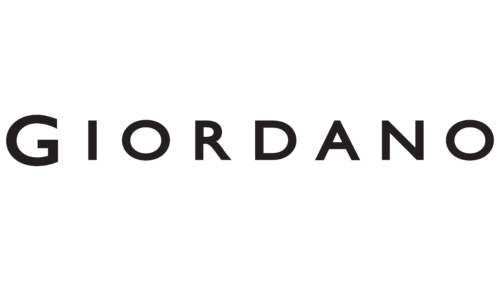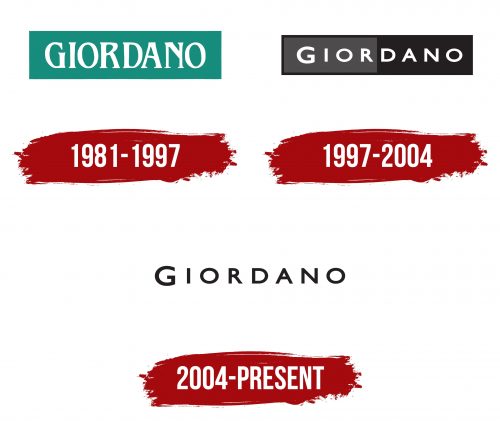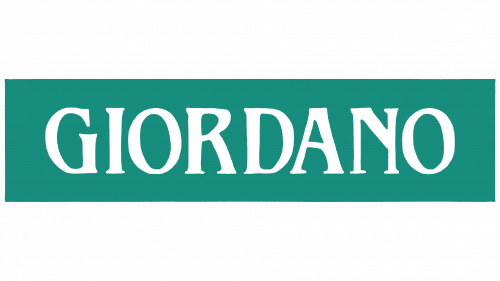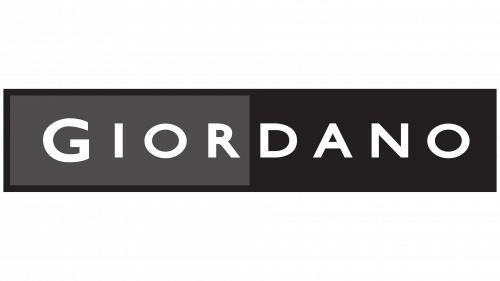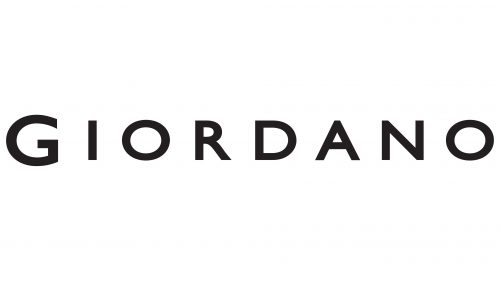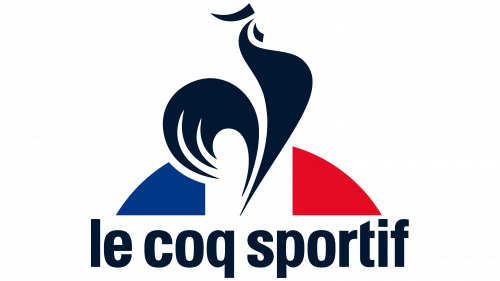The Giordano logo evokes style and refined aesthetics. It is created with special attention to the brand’s core values, which aim to offer customers high-quality everyday clothing that meets elevated standards.
The brand identity is imbued with classic beauty and pronounced minimalism. Two contrasting colors form the foundation of the brand’s perception, reflecting its unique individuality. The emblem appears original due to the text element rendered in its graphic, which highlights the brand name and lends it brilliance. The elegance of the font emphasizes the visual mark on a white background, creating a timeless effect and adding distinctive depth.
The company has achieved global recognition through its personalized approach to clothing design, careful attention to customer needs, and commitment to high quality in every item. For this reason, the goal of the brand’s modern identity extends beyond mere recognition. It aims to make it easy and convenient for every customer to find products, fostering a harmonious interaction between the customer and the brand in any market.
Giordano: Brand overview
Giordano’s journey began in 1981 in Hong Kong. The company was founded by entrepreneur Jimmy Lai, originally from mainland China. Having gained experience in the textile industry, Lai decided to create a clothing brand offering high-quality essentials at affordable prices.
That same year, the first Giordano store opened in Hong Kong. Initially, the company focused on men’s apparel, offering simple yet stylish T-shirts, shirts, and pants. Lai chose the name “Giordano” because he believed its Italian sound gave the brand an international appeal.
In its early years, the business quickly gained popularity among locals in Hong Kong. The company’s commitment to its motto, “simplicity, quality, value,” played a significant role in its success. This approach allowed it to stand out from lower-quality local brands and more expensive international labels.
By the mid-1980s, the brand began expanding beyond Hong Kong. In 1985, the company opened its first store in Singapore, marking the start of its international growth. The success in Singapore fueled further expansion across the region.
In 1986, stores opened in Taiwan, and the company continued to expand into other Asian countries. While each new market presented unique challenges, the business adapted its model to fit local needs while maintaining its core values.
The late 1980s and early 1990s saw rapid growth. The company expanded its offerings to include women’s and children’s clothing, broadening its market reach and attracting new customer segments.
In 1991, it was listed on the Hong Kong Stock Exchange, which provided additional growth funds. The public listing also boosted the brand’s reputation and solidified its market position.
In the mid-1990s, the company entered the large and dynamic mainland Chinese market, opening stores in major cities such as Beijing and Shanghai. While this move required significant investment and adaptation, it was a long-term success.
By the end of the 1990s, the business had established a presence in multiple Asian countries and began expanding into new regions. The company opened stores in the United Arab Emirates and gradually entered other Gulf countries.
In the early 2000s, the brand diversified its offerings. It launched new lines aimed at different market segments, including a sophisticated women’s clothing line and BSX, which targeted a younger audience.
Throughout the 2000s, the company aggressively expanded its franchise network, which allowed it to enter new regions more quickly. This strategy worked particularly well in markets where the brand had little prior experience.
The 2008 global financial crisis also affected the company. Sales declined in many markets, particularly in developed countries. However, the business fared better than many competitors, thanks to its focus on affordable prices and wardrobe basics.
In response to the growing e-commerce trend, the company began investing in online sales during the 2010s. It developed its website and mobile app and improved logistics to ensure timely order delivery.
By 2015, the business operated over 2,500 stores in more than 30 countries. The company continued to expand, entering new markets in Asia, the Middle East, Australia, and even parts of Europe.
2018, the company celebrated a major milestone by opening its 2,700th store. This achievement highlighted the growth from a small Hong Kong-based store to a global brand with a presence across multiple continents.
Like many retailers, it had to adapt between 2020 and 2022. The company focused on improving supply chain processes, optimizing its network of physical stores, and accelerating the growth of its digital sales channels.
By 2023, the business remained a leading Asian apparel brand, staying true to its roots while offering affordable, high-quality clothing to a diverse global audience. The story reflects the company’s ability to navigate changing market conditions while maintaining its core values for over 40 years.
Meaning and History
What is Giordano?
This international retailer, based in Hong Kong, is known for its accessories and casual clothing. The company offers affordable yet quality products for men, women, and children, having impacted markets in Asia and the Middle East. The brand’s aesthetic emphasizes utility, adaptability, and simplicity, providing wardrobe essentials that appeal to many consumers. The brand stands out for its efficient inventory management and customer-focused philosophy. Its product range includes jeans, polo shirts, t-shirts, and outerwear, available in various colors with timeless designs. The company has successfully established itself as a leading provider of casual clothing, seamlessly blending modern and classic elements.
1981 – 1997
The first Giordano logo stood out for its unique color scheme and combination of colors, highlighted by an unconventional presentation. The brand emblem featured a harmonious blend of white and turquoise shades. This visual union created an effect of unity, where each color complemented and enhanced the aesthetic appeal of the other.
The logo was styled as an informational sign. The turquoise background emphasized the brand name, setting off large white letters and drawing attention to each character. One might expect the contrasting background tone to be the main focal point, yet its role was different—it served as a supporting element. The large, radiant white letters were easy to read and memorable. A significant detail was the use of a serif font, selected by the designers to highlight the brand’s uniqueness. The tall, upward-stretched letters conveyed a sense of stability and immovability, symbolizing the company’s reliability and high status.
The elegance of the text is clear, yet certain elements of freedom are evident, adding a dynamic quality to the image. In this way, the company seeks to communicate to its audience that its products are designer and stand out from the typical clothing range, emphasizing their distinctive style and uniqueness.
1997 – 2004
In 1997, the updated Giordano logo underwent changes that almost entirely transformed its appearance. Brightness gave way to a classic tone, and asymmetry was introduced into the identity to highlight the uniqueness of the products and distinguish them from other brands. The design used three shades, elevating the logo’s color scheme to a new, unconventional level and adding deeper meaning.
At that time, fashion houses typically adhered to monochromatic backgrounds in their brand identities, but Giordano took a different approach. The visual mark featured two backgrounds: gray and black. A black border framed both backgrounds to enhance the overall visual effect. This frame, a rectangular outline with thick, wide edges, added a formal and polished look to the emblem.
The left part of the rectangle was filled with gray, extending to an implied vertical line through the center of the figure. The right side, by contrast, was set against a black background, nearly blending with the black border outline, creating an effect of subtle, refined unity. The brand name was rendered in white letters, standing out in contrast on both backgrounds.
Each text letter appeared expressive and harmonious, emphasizing the brand’s elegance. The name looked striking on both backgrounds, underscoring the brand’s individuality and aesthetic appeal.
2004 – today
In 2004, a minimalist version of the brand identity was introduced, showcasing a simplicity not previously seen in earlier logo versions. The new design lacked bright or contrasting backgrounds, making it restrained and concise. The emblem’s base was white, creating a sense of purity and simplicity, while black served as an “attention magnet,” enhancing the overall composition. Black, associated with strength and confidence, symbolized the brand’s reliability, underscoring assurance and stability in future growth. The classic logo style highlighted the uniqueness of the products in over 40 countries worldwide.
Using bold type and straight, clear lines created a visually strong effect, appearing flawless and inspiring trust. The increased spacing between letters enhanced the readability of the name, adding a presentational effect that made the logo even more expressive and memorable.
